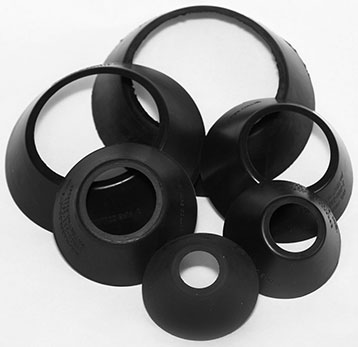How this pipe collar addresses the number one cause of residential roof leaks.
The typical pipe collar deteriorates over time much faster than asphalt shingles. This unfortunate design disparity between materials is why pipe collar failures are the number one suspect when it comes to water infiltration. W.R. ‘Bill’ Merrin, a roofing contractor, has seen these kinds of failures in traditional pipe collars, mastics and tapes up close. He started developing his own solution to the problem, an EPDM rubber collar that slides down over the vent to form a watertight seal. From this, Wil-Mar Products was created, and Bill’s invented Pipe Collar became available for contractors everywhere.
That was nearly 30 years ago and feedback from contractors has been great. They really like that the collars are made from EPDM, which keeps them from deteriorating and cracking. We have heard from some contractors that they are stocking their service trucks with The Pipe Collar because so many of their service calls are related to pipe collar failures. Having a reliable replacement option in the truck provides a quick fix for the problem and a fix that contractors know will perform and last for the remaining life of the roof.
We sent a few boxes of pipe collars to 1st Choice Roofing in Ohio for their service team to try out and so we could get feedback from the field. “Typically, when we get calls for leaks, we make a temporary repair until we can schedule a time to get back out there and make a permanent repair,” explained company President Tom Truelson. “That is what we thought would happen with these, but they performed so well that they ended up being the permanent repair on the first visit.”
As for what the service crews have to say about them, Tom shared that the crews love them. “When it’s 100 degrees outside and they can spend three minutes on the roof instead of two hours, that makes them really happy,” said Tom.
Have a question? AskARoofer.
Find your local roofing contractor in the RoofersCoffeeShop® Contractor Directory.
Original article source: RCS



